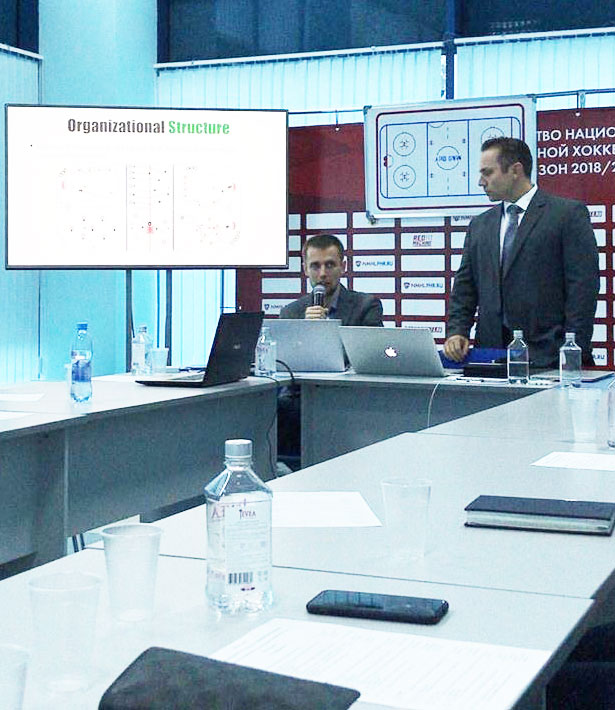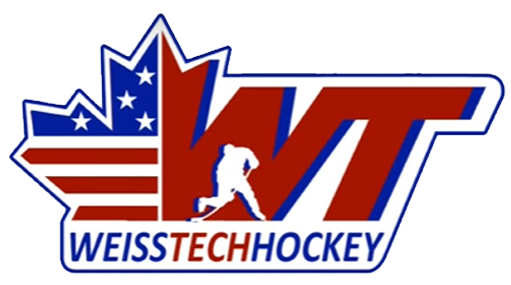A Journey of Growth and Success in Youth Hockey Coaching
In the realm of youth sports, coaching is as much about developing character and skills as it is about winning games. The story of Max Sinnis, a dedicated hockey coach from Nova Scotia, provides a compelling example of this philosophy in action. Over twenty years of coaching, Max has honed his approach, emphasizing discipline, team culture, and continuous improvement, guiding his teams from humble beginnings to significant achievements. Below, we delve into his coaching journey, the strategies he employed, and the invaluable lessons learned along the way.
Starting Late but Catching Up Quickly
Max’s own hockey journey began relatively late. He didn’t start playing the sport until he was nine years old, an age considered late for many competitive athletes. Despite his initial struggles on the ice, he developed a profound love for the game, sparked in part by his father, who was also his coach. This familial connection to the sport set the stage for Max’s future commitment to coaching his own son, Justin, and later other young athletes.
Transitioning to Coaching
When Justin began his hockey journey at the age of five, Max naturally transitioned into a coaching role. He coached his son through various levels, achieving considerable success along the way. Even after Justin finished his youth hockey career, Max’s passion for coaching didn’t wane. He continued to find fulfillment in working with other kids, applying the lessons and tactics he had learned over the years.
Building a New Team Dynamic
One of Max’s major challenges came when he started coaching a new group of players he had never worked with before. Unlike his previous coaching experiences where he was familiar with the players and their families, this new team consisted of strangers. This presented an opportunity to build a fresh team culture from scratch, unburdened by previous associations and expectations.
Establishing a Three-Year Plan
Max envisioned a three-year plan for this new team, focusing on consistent development and long-term success. The plan’s cornerstone was creating a strong team culture built on accountability, skill development, and strategic gameplay. He began by assigning specific goals to each player, emphasizing their individual contributions to the team’s success. This tailored approach helped each player understand their role and value within the team.
Emphasizing Accountability and Discipline
A significant part of Max’s coaching philosophy involves instilling a sense of accountability in his players. For Max, discipline is non-negotiable; players who disrespected referees or exhibited unsportsmanlike behavior faced strict consequences, regardless of their skill level. This approach ensured that all players were treated equally, fostering a fair and respectful team environment.
The Role of Video Analysis
Max also incorporated video analysis into his coaching repertoire, leveraging instructional videos to teach complex hockey strategies. This method allowed players to visualize and understand their roles within different plays and systems, maximizing their time on the ice for practical application of these strategies. This homework-style learning proved highly effective, enabling players to come to practice better prepared and more knowledgeable.
Encountering Setbacks and Learning from Losses
The first season under Max’s three-year plan was a tough one, with the team winning only seven games. However, these losses were framed as learning opportunities. Max emphasized the importance of effort and progress over immediate results, a mindset that kept the team motivated and slowly built their resilience. By maintaining this focus on long-term development, Max ensured that his players remained committed despite the discouraging win-loss record.
Resilience and Progress
Entering the second season, the team saw significant improvement. They finished with a balanced record and reached several tournament finals, although they didn’t always clinch the first-place spot. This consistent performance in the face of adversities fortified the team’s resolve. Specific leadership within the team also started to crystallize, with certain players naturally stepping into roles that motivated and unified their peers.
The Role of Leadership Continuation
An essential element of the team’s evolving success was the continuation of strong leadership. Senior players who had experienced the previous season’s struggles and triumphs became key figures in maintaining and building upon the team’s culture. This ongoing leadership helped integrate new team members, ensuring that the ethos of hard work and commitment remained intact.
Achieving Success in the Third Season
By the third season, the team was in excellent shape. Practices were intense and focused, with players self-organizing additional drills to improve their conditioning and skills. The synergy on the ice was palpable, and it translated to their performance in games. The team’s strategic execution, bolstered by the rigorous training and cohesive leadership, led them to an impressive 47 wins in the season, a stark contrast to their initial seven-win performance in the first year.
Key Strategies Implemented
Max’s third-season strategy included:
- Maintaining a Consistent Practice Routine: Regular practice of critical drills and systems, ensuring players were well-versed in both offensive and defensive strategies.
- Promotion of Team Accountability: Players held each other accountable, reducing the need for constant coach intervention.
- Flexibility in Player Positions: Adapting player positions based on their evolving skills and team needs, ensuring optimal performance during critical moments.
Handling Crucial Moments
During the third season, the team faced moments of high pressure, including key games in major tournaments. Max’s approach to these situations involved a blend of tactical adjustments and psychological readiness. Players trusted in the systems they had practiced and drew confidence from their continued success throughout the season. One notable moment was their victory in the SEDMHA tournament, where strategic gameplay and mental fortitude led them to win the championship, etching a significant milestone in their journey.
Lessons and Takeaways
Max’s journey offers several valuable lessons for coaches at all levels of youth sports:
- Set Clear, Achievable Goals: Tailor goals to individual players to keep them motivated and aware of their contributions.
- Utilize Accountability Effectively: Implement a fair system of discipline to maintain respect and effort within the team.
- Leverage Video Analysis: Use technology to supplement on-ice training, enhancing player understanding and performance.
- Foster Leadership from Within: Encourage and empower player leaders to maintain and propagate a positive team culture.
- Learn from Losses: Use setbacks as teaching moments to build resilience and improve future performance.
Conclusion
Max Sinnis’s coaching journey is a testament to the power of strategic planning, accountability, and the right team culture in developing successful and resilient young athletes. Through his carefully crafted three-year plan, Max was able to transform a struggling team into champions, demonstrating that dedication, consistent effort, and a focus on long-term growth yield profound results.
In the broader context of youth sports, Max’s story underscores the role of coaches not just as instructors, but as mentors shaping the character and future success of their players. By prioritizing holistic development alongside competitive success, coaches can help young athletes excel both on and off the field.

Jeremy Weiss (with his translator) presenting at a hockey coaching symposium for the Russian Federation in Moscow—2018.
Who is Jeremy Weiss?
Hockey coach and international consultant, Jeremy Weiss, has worked with thousands of coaches worldwide since 2008 to help produce championship teams at every age and skill level.
He is known internationally through the work he has done online. In 2008 he invented “digital chalktalks” which combined screen sharing with drill diagramming software, to produce a training experience nobody had ever seen before. His YouTube following quickly grew to over 19,000 subscribers, and he has produced over 130 training videos.
Jeremy runs a development blog for coaches, which has over 280 posts. He is the author of 10 hockey books for coaches, and is the editor of Hockey Development Magazine.
He was trained in the Eastern European style as a pre-teen, by his Czechoslovakian skills coach, and competed internationally as a “Wexford Raider” among the top youth hockey programs in the world including Russia, Czechoslovakia, Finland, and top teams in his home province Ontario, Canada.
He majored in Exercise Sciences at Brigham Young University, and subsequently worked as a Personal Trainer, where he continued to study and develop ideal training methods for hockey.
He has incorporated the very best pieces from the various training styles he has been involved in, and has built a world-class off-ice strength and conditioning program that fits the specific needs of hockey players.


